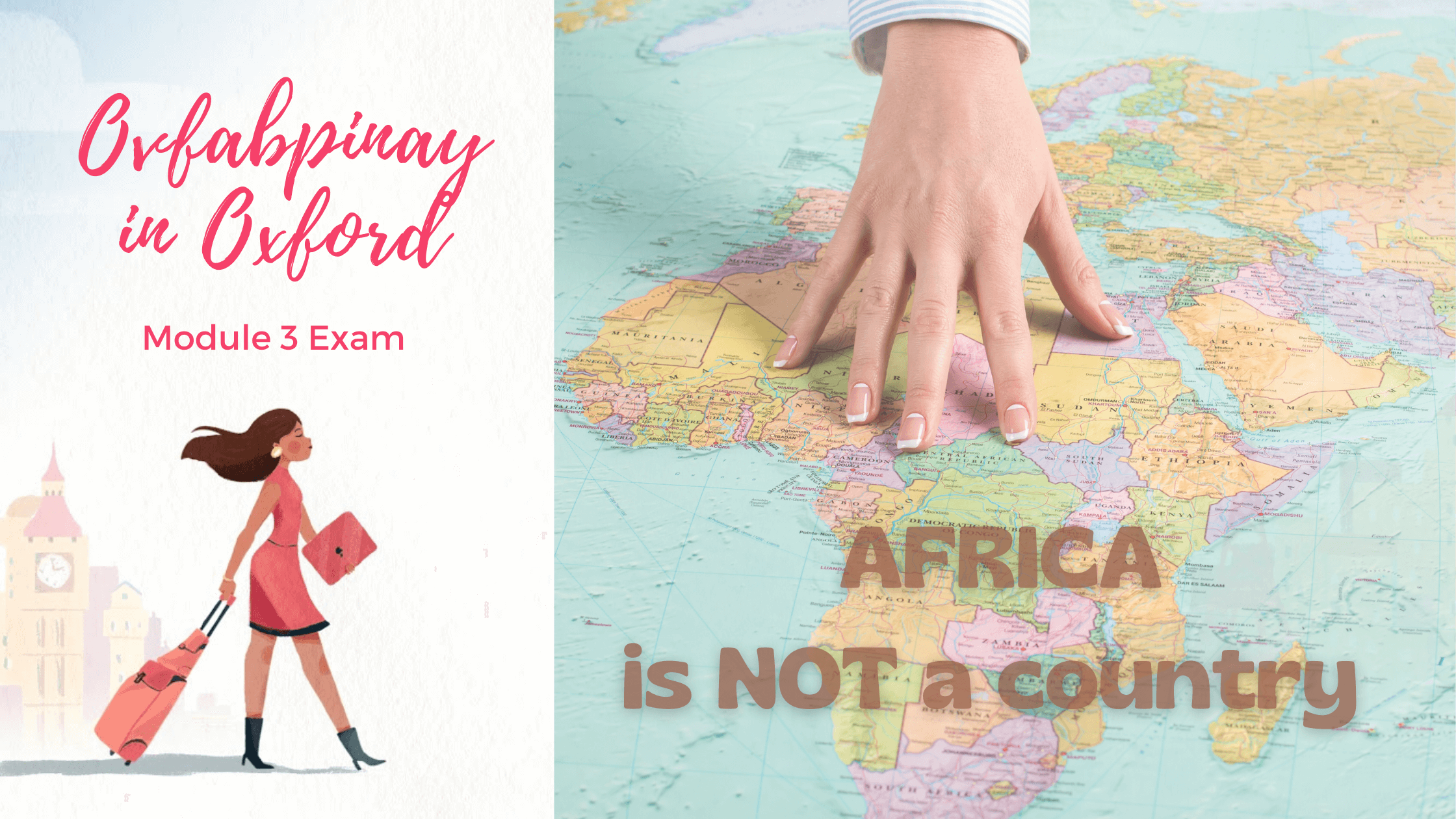For our globalization strategy module’s exam, we were assigned the Bharti Airtel business case. The case talked about Airtel’s (an Indian telecoms company) expansion into Africa back in 2010. It was pretty impressive (or not) – tackling 16 African countries at once with the assumption that the continent is very much like India.
Hence my blog title. However, the title of my blog post has little to do with geography. It is a rather silly but very important statement to understand and digest if you are considering a global business expansion to Africa.
The business case was actually very long and had A LOT of information. It took me more than one sitting to completely read it. What actually helped in my exam preparation process was to spend an entire afternoon creating an outline to organize and summarize the information that would seem most relevant to globalization strategy. How did I find an entire afternoon? Simple. I sent my husband and daughter away to be with friends. Luckily we have friends!
I was clueless about doing business in Africa so the business case and our study group discussions- thanks to my study mate Fatima who has years of experience conducting business in the continent- was a real eye-opener for me.
My study group mates and I analyzed the case using the key frameworks from the module- Triple A, 5 contexts to spot institutional voids, and a bit of IA3. Remember global value chain? We were all still clueless on the topic and decided that it would most likely not be relevant. I could not agree more.
On the Triple A analysis, the main thing there was that Airtel pretty much applied Aggregation and Adaptation. Aggregation to roll-out the Minute Factory business model, while Adaptation was more of a consequence of the assumption that Africa was like India. Far from it, of course! During post acquisition integration, eventually all the cultural diversity and uniqueness of each country in scope came out resulting in huge localization efforts as part of their transformation program.
On the 5 contexts analysis, I already expected that there would be quite daunting institutional voids. I was however still surprised with two things- the lack of supply chain ecosystem and the distribution monopoly.
On IA3, which deals with non-market issues, my study group mates and I did not get very far on the discussion since it’s too broad and would really depend on personal preference on which issue one wants to tackle and more importantly, on how to frame the issue. In the exam paper, I used the slow liberalization of the telecom industry as my key issue and framed it as depriving the Africans of a basic human right to mobile connectivity.
We also had to apply some frameworks from module 1 (strategy). Given that we had the first module about 6 months ago at the time of writing the exam, I really felt like I had to learn the frameworks all over again! Hello Porter’s Five Forces and VRIO! I did spend quite a bit of time polishing my analyses using these frameworks but somehow glad that I had a refresher.
On the key exam question – Should Bharti have prioritized entering particular African regions or countries over others? My answer was to focus on the 5 largest markets/countries in scope. The five countries alone account for 76% of the market, and Airtel’s market share was substantial enough with just the 5 versus 16 countries. This also means that with focusing on 5, there would be lesser costs in localization, transformation and infrastructure investments. I do wonder what Airtel thinks about their African strategy nowadays.
And just like the past two modules, I planned to finish way before deadline but still submitted after my target date. My word count improved though- I submitted with 2979 words of the 3000 word count limit. I am very pleased indeed.





